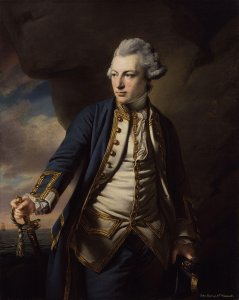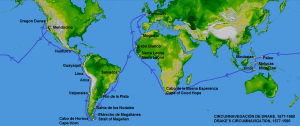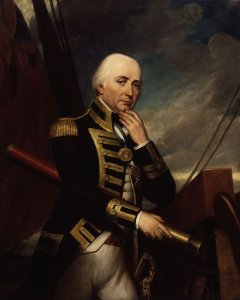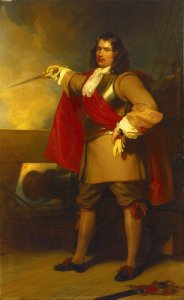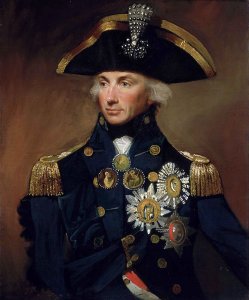Today in Naval History - Naval / Maritime Events in History
13th of September
some of the events you will find here,
please use the following link where you will find more details and all other events of this day .....
1653 – English 200-ton warship Swan / HMS Swann (1641 - 12) sunk in storm
Swan was a 200-ton warship of the English navy, launched as a Royalist vessel in 1641 but captured by the Commonwealth of England when her crew revolted in 1645. She carried twelve cannons, which were cast by John Browne.
The warship was a part of Oliver Cromwell's fleet of six vessels which attacked a Royalist stronghold at Duart Castle in Mull, UK, during the English Civil War. She sank in storm on 13 September 1653 off the west coast of Scotland.
A naval diver found the remnants of the Swan in 1979 and important items from the wreck were recovered during the 1990s in an excavation led by maritime archaeologist Colin Martin from the University of St Andrewsin Fife, Scotland. Items recovered at that time included a corroded pocket watch which appeared to look like "...little more than a lump of rock from the outside", many silver coins, iron guns and other military artifacts. The items were deposited with the National Museum of Scotland.

1742 – Launch of French Trident, 64-gun Third Rate Ship of the Line at Toulon
designed and built by Pierre-Blaise Coulomb) – captured by the British in the Second Battle of Cape Finisterre in October 1747

1799 - HMS Arrow (1796 - 28) and HMS Wolverine (1798 - 16) captured Batavian Draak (24) and Gier (14), two days later Dolphin (1799 - 24)
anchored under the island of Ulie at the entrance to the Texel. Draak turned out to be a sheer hulk so Cptn. Bolton burnt her.
On 9 September Vice-Admiral Mitchell detached Arrow and Wolverine to attack a ship and a brig belonging to the Batavian Republic and anchored under the Vlie at the entrance to the Texel. Arrow had to lighten ship and the following day they crossed over the Flack abreast of Wieringen and saw the enemy in the passage leading from Vlie Island towards Harlingen. On 12 September Wolverine, commanded by William Bolton, anchored within 60 yards of the brig and only had to fire one gun before the brig hauled down her colours. She proved to be Gier, armed with fourteen 12-pounders. Next, Arrowexchanged broadsides with the ship Draak, of 24 guns (six 50-pound brass howitzers, two 32-pounder guns, and sixteen long 18-pounder guns), which surrendered when Wolverine came up. Draak turned out to be a sheer hulk, so Bolton burnt her. The British also captured two schooners, each of four 8-pounder guns, and four schuyts, each of two 8-pounder guns. The Dutch prisoners numbered 380 men. In 1847 the Admiralty awarded the Naval General Service Medal with clasps "Arrow 13 Sept 1799" and "Wolverine 13 Sept. 1799" to any survivors of the two crews that claimed them.
HMS Arrow was a sloop in the Royal Navy that the Admiralty purchased in 1796. during the French Revolutionary Wars she participated in many actions, including one that resulted in her crew qualifying for the Naval General Service Medal. On 3 February 1805 she and Acheron were escorting a convoy from Malta to England when they encountered two French frigates. Arrow and Acheron were able to save the majority of the vessels of the convoy by their resistance before they were compelled to strike. Arrow sank almost immediately after surrendering, and Acheron was so badly damaged that the French burnt her.

HMS Wolverine (or Wolverene, or Woolverene), was a Royal Navy 14-gun brig-sloop, formerly the civilian collier Rattler that the Admiralty purchased in 1798 and converted into a brig sloop, but armed experimentally. She served during the French Revolutionary Wars and participated in one action that won for her crew a clasp to the Naval General Service Medal. A French privateer captured and sank Wolverine on 21 March 1804 whilst she was on convoy duty.

1801 - HMS Lark (16), Lt. Johnstone, captured Spanish privateer schooner Esperance, within the Portillo Reefs, Cuba.
HMS Lark was a 16-gun ship sloop of the Cormorant class, launched in 1794 at Northfleet. She served primarily in the Caribbean, where she took a number of prizes, some after quite intensive action. Lark foundered off San Domingo in August 1809, with the loss of her captain and almost all her crew.

1803 - Death of John Barry (March 25, 1745 – September 13, 1803)
who was an officer in the Continental Navy during the American Revolutionary War and later in the United States Navy. He came to be widely credited as "The Father of the American Navy" (and shares that moniker with John Paul Jones and John Adams) and was appointed a captain in the Continental Navy on December 7, 1775. He was the first captain placed in command of a U.S. warship commissioned for service under the Continental flag.
After the war, he became the first commissioned U.S. naval officer, at the rank of commodore, receiving his commission from President George Washington in 1797.
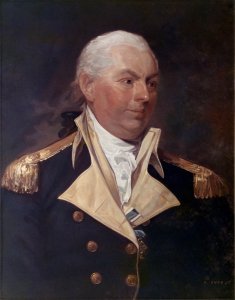
1810 - Action of 13 September 1810 - HMS Africaine (38), Cptn. Robert Corbett (Killed in Action), taken by Astree (38) and Iphigenie (38), but re-taken by HMS Boadicea (38), Cptn. Josias Rowley - Part 1 Naval Event
The Action of 13 September 1810 was an inconclusive frigate engagement during the Napoleonic Wars between British Royal Navy and French Navy frigates during which a British frigate was defeated by two French vessels near Isle de France (now Mauritius), but British reinforcements were able to recapture the ship before the French could secure her. The British frigate was HMS Africaine, a new arrival to the Indian Ocean. She was under the command of Captain Robert Corbet, who had served there the previous year. Corbet was a notoriously unpopular officer and his death in the battle provoked a storm of controversy in Britain over claims that Corbet had either committed suicide at the shame of losing his ship, been murdered by his disaffected crew, or been abandoned by his men, who were said to have refused to load their guns while he remained in command. Whether any of these rumours were accurate has never been satisfactorily determined, but the issue has been discussed in several prominent naval histories and was the subject of at least one lawsuit.
The action came about as a direct consequence of the Battle of Grand Port three weeks earlier, in which a British squadron had been destroyed in a failed attack on Grand Port harbour on Isle de France. This gave the French forces on the island a significant regional advantage, outnumbering the British frigate on the recently captured Île Bourbon, commanded by Commodore Josias Rowley, by six to one. British reinforcements were hastily despatched to the area but the French were blockading Île Bourbon in force and the arriving reinforcements were in constant danger of attack by more powerful French units. Africaine was the first ship to reinforce Rowley's squadron, but within three days of her arrival in the region was engaged by two French ships while attempting to drive them away from Saint Denis on Île Bourbon. Corbet was severely wounded in the opening exchanges and subsequently died. Although his crew fought hard, they were overwhelmed by the French frigates and forced to surrender, only for Rowley to arrive in HMS Boadicea and drive off the French warships, recapturing Africaine.
1810 - Action of 13 September 1810 - HMS Africaine (38), Cptn. Robert Corbett (Killed in Action), taken by Astree (38) and Iphigenie (38), but re-taken by HMS Boadicea (38), Cptn. Josias Rowley - Part 2 The Ships
Africaine (1798 - 40 - Preneuse-class) was one of two 40-gun Preneuse-class frigates of the French Navy built to a design by Raymond-Antoine Haran. She carried twenty-eight 18-pounder and twelve 8-pounder guns. The British captured her in 1801, comissioned her as HMS Africaine, only to have the French recapture her in 1810. They abandoned her at sea as she had been demasted and badly damaged, with the result that the British recaptured her the next day. She was broken up in 1816.

1858 - SS Austria was a steamship of the Hamburg America Line in one of the worst transatlantic maritime disasters of the nineteenth century, claiming the lives of 449 passengers and crew..
SS Austria was a steamship of the Hamburg America Line which sank on 13 September 1858, in one of the worst transatlantic maritime disasters of the nineteenth century, claiming the lives of 449 passengers and crew. The Austria was built by Caird & Co. of Greenock, Scotland and was launched on 23 June 1857. She was 318 ft and 2,684 BRT, with three masts and single screw propeller propulsion.

Sinking of the SS Austria, at the Deutsches Historisches Museum.
13th of September
some of the events you will find here,
please use the following link where you will find more details and all other events of this day .....
Naval/Maritime History - 27th of August - Today in Naval History - Naval / Maritime Events in History
Today in Naval History - Naval / Maritime Events in History 11 September 1798 - Launch of HMS Temeraire, a 98-gun ship of the Neptune-class HMS Temeraire was a 98-gun second-rate ship of the line of the Royal Navy. Launched in 1798, she served during the...
shipsofscale.com
1653 – English 200-ton warship Swan / HMS Swann (1641 - 12) sunk in storm
Swan was a 200-ton warship of the English navy, launched as a Royalist vessel in 1641 but captured by the Commonwealth of England when her crew revolted in 1645. She carried twelve cannons, which were cast by John Browne.
The warship was a part of Oliver Cromwell's fleet of six vessels which attacked a Royalist stronghold at Duart Castle in Mull, UK, during the English Civil War. She sank in storm on 13 September 1653 off the west coast of Scotland.
A naval diver found the remnants of the Swan in 1979 and important items from the wreck were recovered during the 1990s in an excavation led by maritime archaeologist Colin Martin from the University of St Andrewsin Fife, Scotland. Items recovered at that time included a corroded pocket watch which appeared to look like "...little more than a lump of rock from the outside", many silver coins, iron guns and other military artifacts. The items were deposited with the National Museum of Scotland.
1742 – Launch of French Trident, 64-gun Third Rate Ship of the Line at Toulon
designed and built by Pierre-Blaise Coulomb) – captured by the British in the Second Battle of Cape Finisterre in October 1747
1799 - HMS Arrow (1796 - 28) and HMS Wolverine (1798 - 16) captured Batavian Draak (24) and Gier (14), two days later Dolphin (1799 - 24)
anchored under the island of Ulie at the entrance to the Texel. Draak turned out to be a sheer hulk so Cptn. Bolton burnt her.
On 9 September Vice-Admiral Mitchell detached Arrow and Wolverine to attack a ship and a brig belonging to the Batavian Republic and anchored under the Vlie at the entrance to the Texel. Arrow had to lighten ship and the following day they crossed over the Flack abreast of Wieringen and saw the enemy in the passage leading from Vlie Island towards Harlingen. On 12 September Wolverine, commanded by William Bolton, anchored within 60 yards of the brig and only had to fire one gun before the brig hauled down her colours. She proved to be Gier, armed with fourteen 12-pounders. Next, Arrowexchanged broadsides with the ship Draak, of 24 guns (six 50-pound brass howitzers, two 32-pounder guns, and sixteen long 18-pounder guns), which surrendered when Wolverine came up. Draak turned out to be a sheer hulk, so Bolton burnt her. The British also captured two schooners, each of four 8-pounder guns, and four schuyts, each of two 8-pounder guns. The Dutch prisoners numbered 380 men. In 1847 the Admiralty awarded the Naval General Service Medal with clasps "Arrow 13 Sept 1799" and "Wolverine 13 Sept. 1799" to any survivors of the two crews that claimed them.
HMS Arrow was a sloop in the Royal Navy that the Admiralty purchased in 1796. during the French Revolutionary Wars she participated in many actions, including one that resulted in her crew qualifying for the Naval General Service Medal. On 3 February 1805 she and Acheron were escorting a convoy from Malta to England when they encountered two French frigates. Arrow and Acheron were able to save the majority of the vessels of the convoy by their resistance before they were compelled to strike. Arrow sank almost immediately after surrendering, and Acheron was so badly damaged that the French burnt her.
HMS Wolverine (or Wolverene, or Woolverene), was a Royal Navy 14-gun brig-sloop, formerly the civilian collier Rattler that the Admiralty purchased in 1798 and converted into a brig sloop, but armed experimentally. She served during the French Revolutionary Wars and participated in one action that won for her crew a clasp to the Naval General Service Medal. A French privateer captured and sank Wolverine on 21 March 1804 whilst she was on convoy duty.
1801 - HMS Lark (16), Lt. Johnstone, captured Spanish privateer schooner Esperance, within the Portillo Reefs, Cuba.
HMS Lark was a 16-gun ship sloop of the Cormorant class, launched in 1794 at Northfleet. She served primarily in the Caribbean, where she took a number of prizes, some after quite intensive action. Lark foundered off San Domingo in August 1809, with the loss of her captain and almost all her crew.
1803 - Death of John Barry (March 25, 1745 – September 13, 1803)
who was an officer in the Continental Navy during the American Revolutionary War and later in the United States Navy. He came to be widely credited as "The Father of the American Navy" (and shares that moniker with John Paul Jones and John Adams) and was appointed a captain in the Continental Navy on December 7, 1775. He was the first captain placed in command of a U.S. warship commissioned for service under the Continental flag.
After the war, he became the first commissioned U.S. naval officer, at the rank of commodore, receiving his commission from President George Washington in 1797.

1810 - Action of 13 September 1810 - HMS Africaine (38), Cptn. Robert Corbett (Killed in Action), taken by Astree (38) and Iphigenie (38), but re-taken by HMS Boadicea (38), Cptn. Josias Rowley - Part 1 Naval Event
The Action of 13 September 1810 was an inconclusive frigate engagement during the Napoleonic Wars between British Royal Navy and French Navy frigates during which a British frigate was defeated by two French vessels near Isle de France (now Mauritius), but British reinforcements were able to recapture the ship before the French could secure her. The British frigate was HMS Africaine, a new arrival to the Indian Ocean. She was under the command of Captain Robert Corbet, who had served there the previous year. Corbet was a notoriously unpopular officer and his death in the battle provoked a storm of controversy in Britain over claims that Corbet had either committed suicide at the shame of losing his ship, been murdered by his disaffected crew, or been abandoned by his men, who were said to have refused to load their guns while he remained in command. Whether any of these rumours were accurate has never been satisfactorily determined, but the issue has been discussed in several prominent naval histories and was the subject of at least one lawsuit.
The action came about as a direct consequence of the Battle of Grand Port three weeks earlier, in which a British squadron had been destroyed in a failed attack on Grand Port harbour on Isle de France. This gave the French forces on the island a significant regional advantage, outnumbering the British frigate on the recently captured Île Bourbon, commanded by Commodore Josias Rowley, by six to one. British reinforcements were hastily despatched to the area but the French were blockading Île Bourbon in force and the arriving reinforcements were in constant danger of attack by more powerful French units. Africaine was the first ship to reinforce Rowley's squadron, but within three days of her arrival in the region was engaged by two French ships while attempting to drive them away from Saint Denis on Île Bourbon. Corbet was severely wounded in the opening exchanges and subsequently died. Although his crew fought hard, they were overwhelmed by the French frigates and forced to surrender, only for Rowley to arrive in HMS Boadicea and drive off the French warships, recapturing Africaine.
1810 - Action of 13 September 1810 - HMS Africaine (38), Cptn. Robert Corbett (Killed in Action), taken by Astree (38) and Iphigenie (38), but re-taken by HMS Boadicea (38), Cptn. Josias Rowley - Part 2 The Ships
Africaine (1798 - 40 - Preneuse-class) was one of two 40-gun Preneuse-class frigates of the French Navy built to a design by Raymond-Antoine Haran. She carried twenty-eight 18-pounder and twelve 8-pounder guns. The British captured her in 1801, comissioned her as HMS Africaine, only to have the French recapture her in 1810. They abandoned her at sea as she had been demasted and badly damaged, with the result that the British recaptured her the next day. She was broken up in 1816.
1858 - SS Austria was a steamship of the Hamburg America Line in one of the worst transatlantic maritime disasters of the nineteenth century, claiming the lives of 449 passengers and crew..
SS Austria was a steamship of the Hamburg America Line which sank on 13 September 1858, in one of the worst transatlantic maritime disasters of the nineteenth century, claiming the lives of 449 passengers and crew. The Austria was built by Caird & Co. of Greenock, Scotland and was launched on 23 June 1857. She was 318 ft and 2,684 BRT, with three masts and single screw propeller propulsion.
Sinking of the SS Austria, at the Deutsches Historisches Museum.






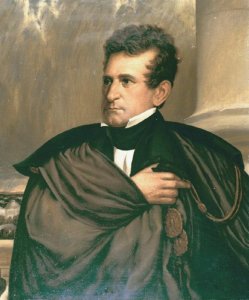
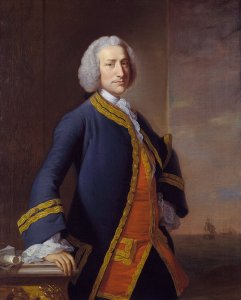
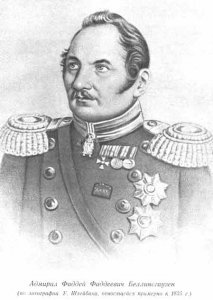

 , Virginia
, Virginia